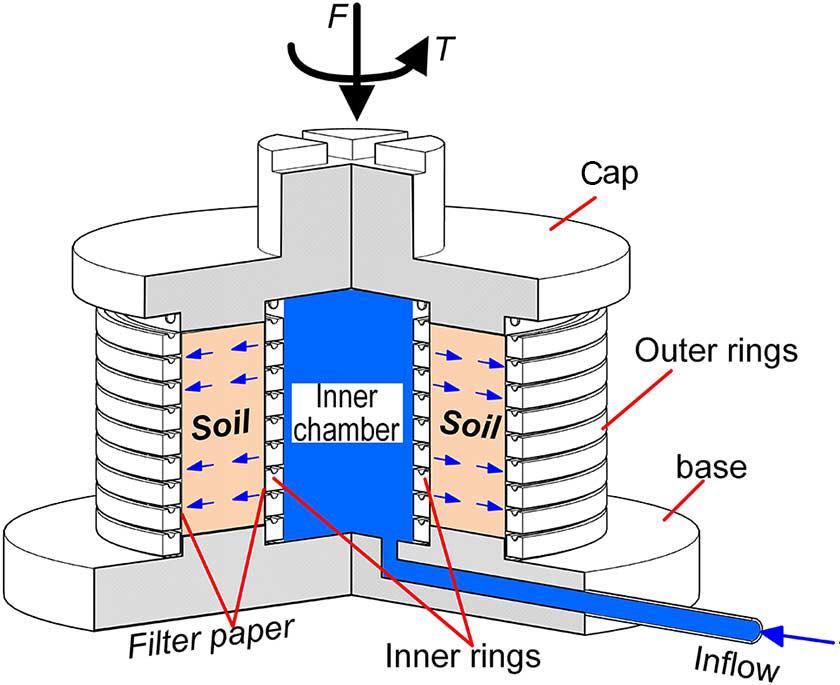[Geotechnical Engineering]
Gang Wang, Xing Wei, Ting Zou. A Hollow Cylinder Radial-Seepage Apparatus for Evaluating Permeability of Sheared Compacted Clay. Geotechnical Testing Journal, 2019, 42(5): 1133–1149. https://doi.org/10.1520/GTJ20170215
Keywords: compacted clay, seepage test, hydraulic conductivity, shear bands, concentrated leakage
Abstract:
Compacted clay is widely used to control seepage in earth and rock-fill dams in favor of its low permeability. The clay at certain locations of dams often experience large shear strain due to differential settlement, which may lead to changes in seepage resistance. A new apparatus was developed to examine the permeability evolution of compacted clay during shearing. The apparatus tests a hollow cylindrical specimen holding by a set of inner and outer laminar rings. The specimen can thus be compressed in the height direction and sheared in the circumferential direction. The permeability is measured by radial seepage from the inner side to the outer side of the hollow cylinder. A series of tests on heavily compacted specimens of a core-wall clay were conducted to demonstrate the performance of the new apparatus. The permeability of unsheared specimens under different surcharge pressures and hydraulic gradients was investigated firstly, and the observed phenomenon agreed well with those in conventional permeameters. Then the permeability evolution during shearing was investigated under constant surcharge pressures. It was found that the compacted specimens deformed non-uniformly with a well-developed shear band, and the permeability of the shear band determines the overall seepage resistance. The permeability of the shear band increases during shearing under low surcharge pressure, whereas under high surcharge pressure, it varies insignificantly. Such behavior is related to different structural changes of shear bands under low and high surcharge pressures. The preliminary test results highlighted an important fact, that the heavy-compacted clay under low surcharge pressure could generate low seepage resistance shear bands when subjected to a large shear, leading to a high risk of concentrated leakage and erosion. The new apparatus could prove useful for clarifying stress conditions triggering low seepage resistance shear bands in compacted clays.

Figure. Schematics of a torsional-shear and radial-seepage hollow cylindrical testing cell.